ARTICLES
ประวัติความเป็นมากิจการต่อเรือไทย
Shipbuilding industry in Thailand as developed and advance as same as other countries in Asia because of abundance of wood suitable for buiding ships. Both warships and merchant vessels were built long time in Thailand history. Most of marine vessels built during those periods were the Chinese junks. Basically Shipbildings were carried out by Chinese supervisors with the support from groups of Thai workers.
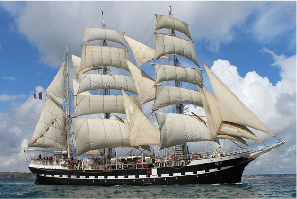
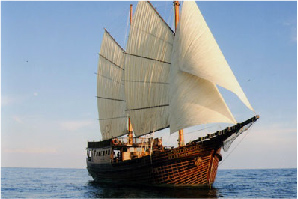
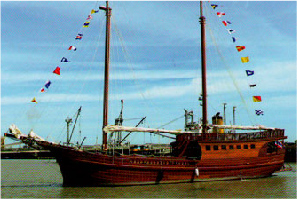
Shipbuilding during Ayutthaya period
During the reign of King Ekatosarot of Ayutthaya period, Western style ships were build for the first time in Thailand”
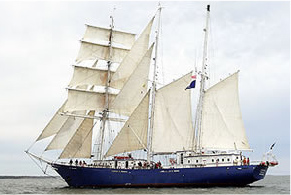
The King requested for assistance from the Netherlands to send shipbuilders and equipment to build Brigs, with two or threemasts,on September 1st,1608 Since then the shipbuilding industry started to grow continuously. Until the reign of King Narai, it was documented that western style ships were build in Ayuttaya and in Marid. In De Choisy’s journal, it is clearly recorded that”the King of Siam gave an order to build Western style vessels and three of them recently made their first sail”.
During Ayutthaya period, the shipbuilding industry in Thailand was flourished.Various types of vessels, including westernstyles ships, Chinese junks, were built for royal naval, using for foreigned trading. There was clear evidence showing that dockyards were constructed to build merchant ships and send over to other foreign countries.
Shipbuilding during Thonburi period
During Thonburi period, ships were actively utilzed in warfare. King Taksin ordered that the Chinese junks being to built maneuvered Thai troops along the Chao Phayariver to Ayutthaya and reclaimed the ex-capital city from the Burmese troops.
Shipbuilding during Rattanakosin period
During the reigns of King Rama II and King Rama III of Rattanakosin period, the trade between Thailand and other and other countries were at their highest point. Most of the Chinese style junks built in Thailand were used. In 1818,
Thai workers had capability to build 6-8 large ships of 1,000 tonnages capacity per year. During the reign of King Rama IV, the new era of steam ships started, wooden ships were built while period were the royal court’s officers from Boonnak family. They also comissioned foreign advisor for the purpose..
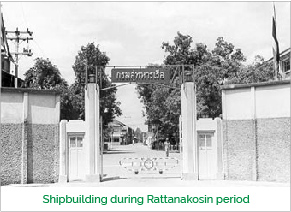
- Naval dockyard, located opposit the Rajavoradit pier on the south side of Wat Rakhagkositaram temple, was initiated by King Rama V on January 5th, 1890 At present, the area is situated by the Royal Thai Naval Dockyard.
- Officer’s dockyards,such as a dockyard at the premises of Somdej Phraya Maha Suriyawong,
- Private dockyards, such as the Bangkok Dock, or the present Bangkok Dock public Company, the public enterprise under the Royal Thai Navy.
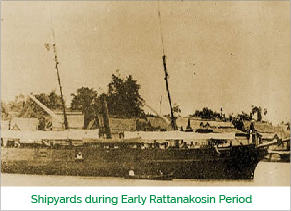
- The first steam ship was built in 1765, in the reign of King Rama IV. The ship was 75 feet in length, 30 feet width and having 15 HP steam engine.
- The first warship was built in 1898 by the Royal Thai Naval Dockyard. It had wooden hull with steel structure, with 113 feet in length and 16 feet width, 200 tonnages of displacement capability, with 171 HP engine, and 7 knots speed.
- The first set of warship that consisted of 4 warships was built in 1927 is Coastal Motor Torpedo Boat made from wood (length: 17 m.) 40 knot speed.
- The first steel warship was built at the Royal Thai Naval Dockyard in 1956, it was a small torpedo boat, with 140 tonnages of displacement capacity, 42.4 meters in length, 18 knots speed, and 360 miles operating capability.
Overview of Shipbuilding and Repairing in Thailand
At present there are 260 business operators running shipbuilding and repairing dockyards as well as other related industries. Those dockyards are located along major rivers, i.e., Chao Phraya, Tha Chin, Mae Khlong rivers and also along Thai Gulf coast lines as well as Andaman coasts and the Strait of Malacca.
In terms of shipbuilding and repairing capability, Thai dockyards can be categorized into three groups: small, medium and large dockyards. They provide services mainly to meet local demands.
1. Small dockyards, with capability for building and repairing of ships smaller than 500 gross tons. Most of dockyards in this group provide services to wooden fishing trawlers.
2. Medium dockyards, with capability for building and repairing ships between 500 – 4,000 gross tons. This group is capable to handle shipbuilding and repairing steel, aluminum or fiberglass ships. Most of these dockyards are located in Bangkok metropolitan areas.
3. Large dockyards, with capability for building and repairing ships over 4,000 gross tons. This group of dockyards are located in Bangkok, Samut Prakan and Chonburi. They utilize most advance and modern equipment and are able to scale up to operate in other areas other than shipbuilding and repairing since they already have machineries and equipments to facilitate their operations, for instance building steel structures, bridges, drilling platforms, etc.
The Essential of Shipbuilding and Repairing Industry
Shipbuilding and repairing industry and Jobs creation The shipbuilding and repairing industry is highly labor intensive. Skilled and unskilled labor are required in all aspects of the shipbuilding and repairing industry and its related industries, for instance, steel structures, bridges, oil drilling platforms, cranes and etc.
Shipbuilding and repairing industry and Income Generation
Each ship is a valuable asset of high investment. Shipbuilding and repairing industry, therefore, is able to generate income from ship construction, maintenance as well as installation of equipment on board ships. The capability and efficiency of the shipbuilding and repairing industry can assist the country not to spend huge amount of money at foreign dockyards for repairing ships which could affect national trade deficit and current cash flow. At the same time, the ability to take oversea orders for shipbuilding in local dockyards can bring about foreign currency into the country.
Shipbuilding and repairing industry and marine transportation industry
Shipbuilding and repairing industry is able to support and facilitate marine transportation industry and international trade by building and repairing ships for the said industry.
Shipbuilding and repairing industry and National Security
Shipbuilding and repairing industry is considered the defense related industry by all nations since it can support national security and economy during war time. Related industries of the shipbuilding and repairing industry can be classified into upstream, midstream and downstream industries. They are essential and have impacts on costs and quality of manufacturing, supporting, promotion and directions of shipbuilding and repairing market.
Upstream Industry
Upstream industry influences costs and quality of shipbuilding and repairing in Thailand. Basically, they are not mature sector and must highly rely on imported raw materials. Upstream industry including steel industry, paints/chemical industry, foundries, manufacturing of machineries, navigation and communications equipments are not fully mature causing dockyards having to struggle control of costs/quality. The exception is in furniture and electronic industries where they are made stronger and better off by Thai skillful workers.
Midstream industry
Midstream industry that provide support to the shipbuilding and repairing industry are financial institutions and educational institutions. However, currently they do not have direct roles in promoting and supporting the shipbuilding and repairing industry. Especially financial institutions do not have clear understanding in the shipbuilding and repairing industry, including the marine transportation industry.
Downstream industry
Downstream industries are also taking part in setting market trend, especially on the types and sizes of ships required in tourism industry, oil and gas drilling, marine transportation and fishery. However, there is no clear targets set, but with the exception in the cases of ship owners, having their business in transportation of commodities for export and import, creating ship building and repair markets for the yards,

